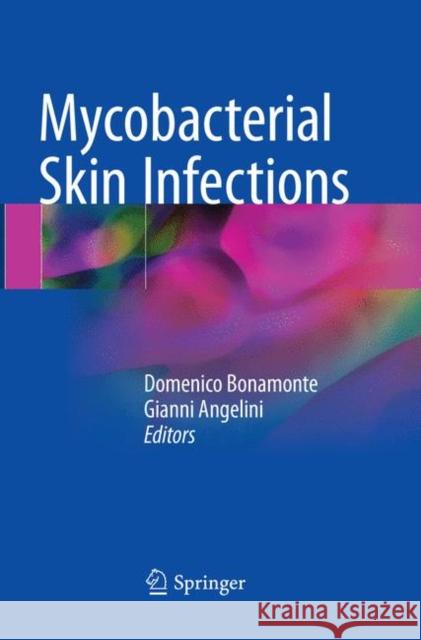Mycobacterial Skin Infections » książka



Mycobacterial Skin Infections
ISBN-13: 9783319839653 / Angielski / Miękka / 2018 / 398 str.
Mycobacterial Skin Infections
ISBN-13: 9783319839653 / Angielski / Miękka / 2018 / 398 str.
(netto: 611,96 VAT: 5%)
Najniższa cena z 30 dni: 616,85
ok. 22 dni roboczych
Dostawa w 2026 r.
Darmowa dostawa!
Preface.- 1 General Introduction.- 2 Characteristics of Mycobacteria.- 3 Taxonomy of Mycobacteria.- 4 Diagnostic criteria of Mycobacteria.- 5 Laboratory procedures of Mycobacteria: Smear microscopy, Cultures, Species Identification, Molecular Typing Methods, Antimicrobial Susceptibility Testing, Skin tests.- 6 Epidemiology of Mycobacteria.- 7 Clinical Presentations of Mycobacteria.- 9 Tuberculosis: Introduction, Etiology, Immunology, Histopathology, Classification, Primary Inoculation Tuberculosis, Warty Tuberculosis, Scrofuloderma, Orificial Tuberculosis, Haematogenous Tuberculosis, Lupus Vulgaris, Miliary Tuberculosis, Metastatic Tuberculous Abscess, the Tuberculids (Lichen Scrofulosorum, Papulonecrotic Tuberculid, Nodular Tuberculids), Prognosis, Diagnosis and Treatment.- 10 Mycobacterium Bovis Skin Infection (Human Tuberculosis of Bovine Origin): Warty tuberculosis.- 11 Bacille Calmette-Guérin: BCG vaccination, Complications of BCG Vaccinations.- 12 Leprosy: Etiology, History and geographical distribution, Pathogenesis, Histopathology, Serology, Indeterminate leprosy, Tuberculoid leprosy, Lepromatous leprosy, Borderline Leprosy, Reactions, Nerve damage, Eye involvement, Prognosis, Diagnosis and Treatment.- 13 Non-Tuberculous Environmental Mycobacteria: Clinical presentations and diagnostic criteria (M. Marinum, M. Ulceran, M. Kansasii, M. Scrofulaceum, M. Szulgai, M. Avium Complex, M. Fortuitum Complex, M. Chelonae/M. Abscess us, M. Haemophilum, other Mycobacteria.- 14 Mycobacterial Skin Infections in Hiv-Infected Persons.- 15 Mycobacterial Skin Infections in Transplant Recipients.
After his degree in Medicine and Surgery, Doctor Domenico Bonamonte specialised in Dermatology and Venereology, also gaining his PhD in Allergology and becoming Research Fellow at the Dermatology Clinic of Bari University. Since March 2013, he is Associate Professor of Dermatology and Venereology, University of Bari. He is active participant in research activities at the Dermatology Clinic of Bari University Hospital, and co-author or author of many scientific publications, including articles, monographs and book chapters. His scientific production, consists of experimental, clinico-experimental and clinical studies, investigates various fields in Dermatology, paying special attention to etiopathogenetic aspects. He has been carrying out in-depth studies in the areas of contact dermatitis, both occupational and non, occupational dermatoses, aquatic dermatitis (prevalently of marine origin), dermatitis in sports environment, inherited bullous epidermolysis and pediatric dermatology.
Professor Gianni Angelini is Full Professor of Clinical Dermatology and Venereal Diseases, at the University of Bari, Italy. After his MD and his specialization in Dermatology and Venereal Diseases, he was there appointed Head of the 2nd Dermatological Clinical Division, then moving to lead the 1rst Division unitl his retirement in 2014. He is Member of the Editorial Board of various International and Italian Dermatological Journals, Past President of the Italian society for Professional and Environmental Allergology and Dermatology. Gianni Angelini is author of over 600 scientific publications, including books on General Dermatology, Allergological and Professional Dermatology, Aquatic Dermatology, monographs and chapters in volumes on Dermatology, Immunology, Occupational Medicine and Internal Medicine. His main research interests include the areas of immunologic, allergic and environmental diseases, and in particular contact dermatitis, professional dermatitis due to physical, chemical and biotic agents, aquatic dermatology, drug-induced dermatitis and urticaria.
This well-illustrated book is a comprehensive guide to the cutaneous clinical presentations of mycobacterial infections. The Mycobacterium genus includes over 170 species, nontuberculous mycobacteria (NTM) having been added to the obligate human pathogens such as M. tuberculosis and M. leprae. NTM are widely distributed in the environment with high isolation rates worldwide; the skin is a major target with variable clinical manifestations. A current resurgence in tuberculosis is aggravated by the synergy with human immunodeficiency virus, the breakdown of health care systems, and the rise in multidrug-resistant disease, as the incidence of leprosy remains stable, at around 250,000 new cases annually, regardless of effective antibiotic therapy. Presentations of various cutaneous infections caused by mycobacteria may be overlooked by clinicians owing the lack of familiarity with tuberculosis, leprosy, and the related NTM clinical features. This handy guide will help the dermatologist to spot the different clinical manifestations, make a prompt diagnosis, and apply effective treatment.
1997-2025 DolnySlask.com Agencja Internetowa
KrainaKsiazek.PL - Księgarnia Internetowa









